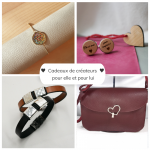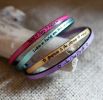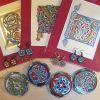Paper bonding
Theprinciple
Cut papers and glue them onto objects to be decorated.
papers can be paper napkins, magazine sheets, sheets made specifically for this purpose with reproduced motifs, Decopatch sheets, handmade papers...
The glue used is transparent when dry, and acts like a varnish: varnish-glue.
Advantages
It's a fast-paced activity, so it's likely to appeal to children. The most time-consuming phase is, of course, cutting, provided the work is done carefully.
Substrates are numerous:
wood Paper napkin directly on wood |
Onglass Painting on glass + napkin motif |
Onmetal Paper napkin motif on metal |
Onterracotta Decopatch on terracotta ashtray |
The paper collage technique can be used to cover curved objects (vases, lampshade bases, trays with rounded edges, etc.).
Disadvantages
It's difficult to hollow out areas, as napkin paper tears easily. If possible, it's better to choose a background of the same color as the area to be hollowed out.
Wet with glue, towel paper can tear, so use a soft brush or small sponge.
Variants
 Click to zoom |
to overcome the disadvantages of paper napkins, new papers have emerged. We now have large sheets of Velo paper, thin and strong, with assorted
patterns printed on them. Cutting is easier than for napkins, thanks to the quality of the paper, and so is gluing, since this paper doesn't tear. On the other hand, once the glue has dried, the pattern is clear: it doesn't blend in like that of a paper napkin. This can be a plus or a minus, depending on the desired effect! See: Velo paper sheets. |
Of course, there are also sheets of Décopatch, a strong paper that allows the tear-and-stick technique...
[





